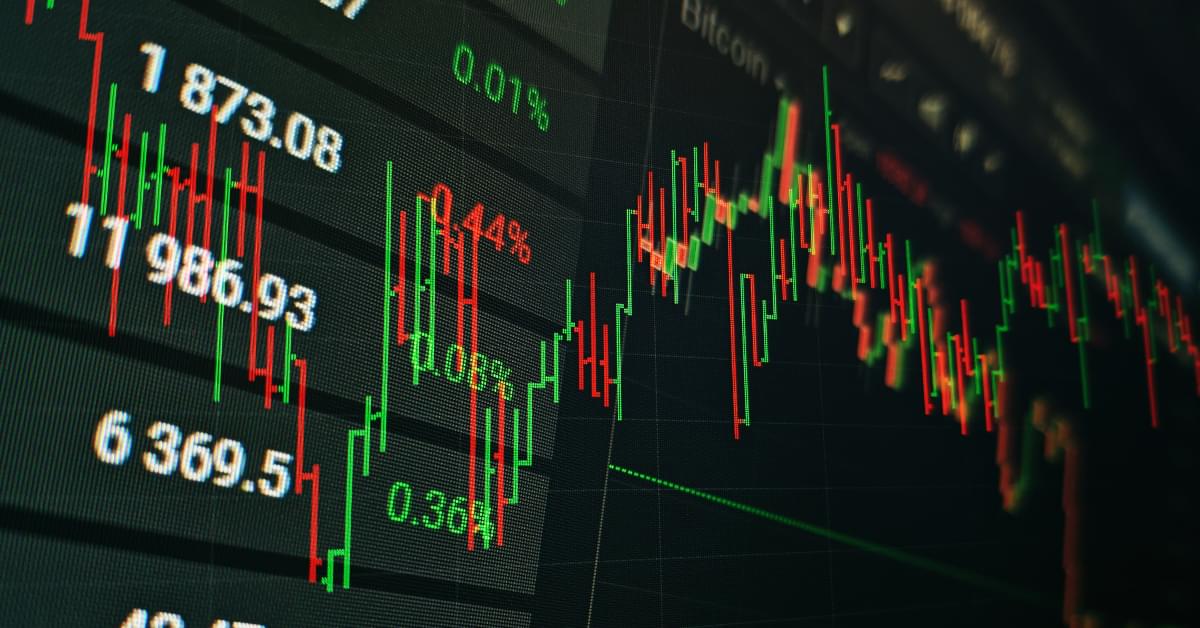
Volatility is an inherent trait of financial markets. Large enterprises, SMEs and sole proprietors who deal with international suppliers, purchase goods in foreign currencies or pay expatriate staff know that forex is vulnerable to the same caveats as all commodity markets (and a few more unique to FX that we’ll detail below).
If you’d like to know more about the factors influencing volatility, click here. Otherwise, read on to learn how to manage currency risk in volatile FX markets effectively.

What are the most volatile commodities?
Volatility is relative to individual markets. Some commodities are inherently less susceptible to volatility than others – Gold is one of the the ‘safest’ commodities. While still subject to price swings, gold is predictably volatile, making it a safe bet for commodity traders. Some of the commodities most known for their volatility are:
- Cryptocurrencies
Cryptocurrencies (or simply ‘crypto’) are unpredictable by nature. As a fairly new commodity, none are sure of what role they will play in the future. Supply, demand and market sentiments can all influence the value of crypto. In addition, evolving government regulations and speculation in the media also play a large role.
- Non-major currency pairs
The forex market is volatile but does not often exhibit the erratic price swings associated with volatility. This is because currencies are highly liquid. Therefore, the market is faster to correct itself due to the high volumes of forex bought and sold daily. Non-major currency pairs are less liquid because of low demand. Market highs and lows tend to swing wider.
- Energy commodities
Energy commodities are volatile because consumers are limited in their capacity to substitute other fuels when the price varies. Furthermore, energy is subject to seasonal changes and hampered by the inability to store most energy once converted from raw materials.
How do we measure volatility?
Global politics, natural disasters and domestic legislation are just some factors that can influence commodity market volatility. Tracking every influencing factor is impractical, so most traders will refer to market indices and key economic indicators instead.
For example, the CBOE Volatility Index (VIX) tracks consumer expectations against realised changes in the S&P 500 index. The Standard and Poor’s 500, or simply S&P 500, records the stock performance of 500 large companies listed on US exchanges. These include Apple, Microsoft, Tesla, Nvidia, and JP Morgan Chase.
A high VIX percentage signals higher market volatility and vice versa. When the VIX rises, the S&P 500 generally falls as risk-averse investors rethink their positions.
The VIX feeds into a broader economic index known as the Fear & Greed Index. Measured on a scale of 0 to 100 – extreme fear to extreme greed – The Fear & Greed Index is used to reliably judge turning points in the stock market.

How do we measure volatility in FX markets?
When assessing the volatility of any currency, we must consider several key indicators.
Different indicators are more or less useful depending on the known volatility of specific pairs. Major currency pairs are generally less volatile, while non-major currency pairs are more volatile.
There are indices similar to the VIX in currency markets implied by option pricing used to measure volatility. However, unlike stock markets, no generalised index can report on the relative strength of all currencies. We must evaluate volatility for each currency pair.
There are several types of volatility. Different ‘flavours’ of volatility impact how businesses operate in global trade differently.
- Implied volatility – How the market expects prices to change over a set period
- Realised volatility – The actual movement in price over a set period
- Future volatility – The rate at which a market might move going forward
- Forecast volatility – How accurate the predicted future rates might be.
Implied volatility is based on current observations and historical trends. Given no major upsets in global trade, businesses can plan their finances on the predicted volatility rate.
The forecast volatility measures how close the estimated volatility was to the actual numbers. If our collective educated guesses were off the mark, we can assume that our future forecasts would be equally inaccurate.
Future volatility is, again, an educated guess based less on actual data and more on general market sentiment. It is not particularly useful for businesses unless you plan expenditures years in advance. Furthermore, it is inadvisable due to the inaccuracy of many FX projections.
How to mitigate the risk of foreign exchange
To avoid assuming an unacceptable degree of risk, here are some forex volatility trading tips:
1. Stay informed on current events
Know what recurring events are likely to spark volatility in a currency (such as important economic reports) and avoid exchanging currency around those times. Keeping an eye on the news can alert you to unpredictable events that might affect a currency’s value and help you avoid unfavourable market conditions.
2. Use every tool at your disposal
Order types help investors and financial managers automatically manage risk. If you know the exact amount of risk you’re willing to assume at a given time, stop losses can help you define your own ‘worst-case scenario.’
- Forward contracts allow companies to hedge their foreign exchange exposures. This ‘buy now, pay later’ approach locks in exchange rates as far as a year in advance, thus securing your trades against the risk of currency fluctuation.
- Market orders help businesses execute a currency purchase automatically when target prices reach a predetermined level, countering the pitfalls of emotional trading and facilitating better financial planning.
- Currency options provide the security of forward contracts without the obligation to fulfil orders, giving an added layer of insurance against FX risk.
3. Have a strategy
A well-defined strategy can help secure your bottom line over an extended period regardless of market conditions and currency volatility. Every guideline above should feed into your overall strategy. Know how to navigate predictable risk events such as earnings releases. Hedge your positions with financial tools to prevent avoidable losses, and know the ins-and-outs of fundamental FX analysis.

How CurrencyTransfer helps manage FX risk
At CurrencyTransfer, we work with hundreds of SMEs, multinational enterprises and individuals who rely on fast, secure and reliable trades to maintain their bottom line.
We’re experts in our field and have created a unique service tailored to the demands of our clientele. In addition, we offer access to a range of FCA-approved brokers, linking you with the best possible currency exchange provider tailored to your unique requirements at any given time.
Enjoy the freedom to trade in over 25 currencies on demand with the help of a personalised dashboard and your personally assigned account manager.
Matthew Swaile
Copywriter
Florence Couëdel
Editor



